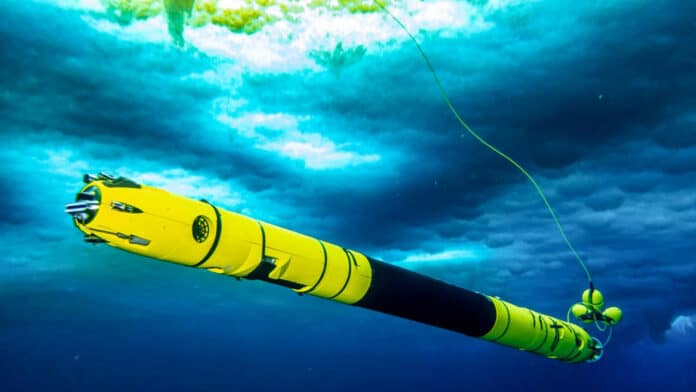Thwaites Glacier is one of the fastest-changing ice-ocean systems in America. The rapid retreat of Thwaites Glacier in West Antarctica appears to be driven by different processes under its floating ice shelf than researchers previously understood, an international team of researchers concluded.
Its assessment is based on first-of-their-kind observations from where the ice enters the ocean. These show that while melting beneath the floating shelf of a vulnerable Antarctic glacier is weaker than expected, melting in cracks and crevasses is much faster. This contributes to the Florida-sized glacier’s retreat and potentially to sea-level rise.
Dr. Britney Schmidt of Cornell University in the US and his team deployed the remotely operated Icefin underwater robot through a nearly 2,000-foot-deep borehole drilled in the ice. The vehicle is designed to access such grounding zones that were previously almost impossible to survey.
Designed to descend through narrow boreholes, the pencil-shaped vehicle measures less than 10 inches in diameter and is more than 12 feet long. It is equipped with thrusters, cameras, mapping instruments, and sensors for measuring ocean current speeds, temperature, salinity, and oxygen levels – information needed to estimate melt rates.
Icefin underwater robot helped researchers capture the first close-up views of the critical point near the grounding line where Thwaites Glacier in western Antarctica – one of the continent’s fastest changing and most unstable glaciers – meets the Amundsen Sea.
From that area, researchers concluded that Thwaites had retreated smoothly and steadily up the ocean floor since at least 2011. The team found that flat sections covering much of the ice shelf’s base were thinning, though not as quickly as computer models had suggested. Meanwhile, the walls of steeply sloped crevasses and staircase-like features were melting outward at much faster rates.
The findings provide new insight into melting processes at glaciers exposed to relatively warm ocean water and promise to improve models predicting Thwaites’ potentially significant contribution to sea-level rise.
“These new ways of observing the glacier allow us to understand that it’s not just how much melting is happening, but how and where it is happening that matters in these very warm parts of Antarctica,” said Britney Schmidt, associate professor of astronomy and earth and atmospheric sciences in the College of Arts and Sciences (A&S) and Cornell Engineering. “We see crevasses, and probably terraces, across warming glaciers like Thwaites. Warm water is getting into the cracks, helping wear down the glacier at its weakest points.”
Since the 1990s, the Thwaites grounding line has retreated nearly 9 miles, and the amount of ice flowing out of the 75-mile-wide region has nearly doubled, according to International Thwaites Glacier Collaboration (ITGC), the largest international field campaign ever undertaken in Antarctica. Because much of the glacier sits below sea level, it is considered susceptible to rapid ice loss that could raise sea levels by more than 1.5 feet.
The BAS team used hot water to drill the borehole Icefin accessed about 1 mile from the Thwaites grounding line. They reported that over a nine-month period, the ocean in that area became warmer and saltier. Surprisingly, the vertical melt rate over much of the ice was less than previously modeled, averaging 6 feet to 18 feet per year.
“Our results are unexpected, but the glacier is still in trouble,” said Dr. Peter Davis, who’s an oceanographer at BAS and lead author on one of the studies. “If an ice shelf and a glacier are in balance, the ice coming off the continent will match the amount of ice being lost through melting and iceberg calving. What we have found is that despite small amounts of melting, there is still rapid glacier retreat, so it seems that it doesn’t take a lot to push the glacier out of balance.”
Journal reference:
- B. E. Schmidt et al. Heterogeneous melting near the Thwaites Glacier grounding line. Nature, 2023; DOI: 10.1038/s41586-022-05691-0
- Peter E. D. Davis et al. Suppressed basal melting in the eastern Thwaites Glacier grounding zone. Nature, 2023; DOI: 10.1038/s41586-022-05586-0
